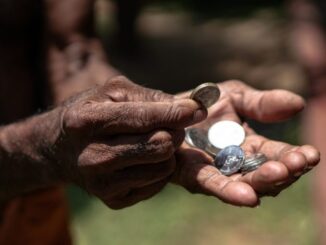
The history of Africa’s energy sector appears to be characterised by success followed by failure, forward movement and then stagnation. But is this a realistic assessment of the continent’s power sector, and more importantly, how has it changed over the past 25 years?
The article appeared in ESI Africa Issue 1-2021.
Read the full digimag or subscribe to receive a free print copy.
In the early 1970s and 80s, Africa’s installed generation capacity was on par with or even higher than many Asian countries. By 2000 this had changed. Today Asia has nearly double the installed capacity of its African counterparts. This growth was, in part, driven by a need to keep up with an average increase in consumption of 5.7% annually between 1985 and the early 1990s. In Africa, however, population growth and energy demand outstripped supply. The reasons for this mismatch are complex and often hard to quantify.
It has been postulated that Africa needs to install more than 7,000MW of new power generation per annum to meet demand [Eberhardt A et al, Africa’s Infrastructure: A Time for Transformation] or as much as a 10-fold increase in generation to meet expected requirements by 2065. Some figures indicate that demand will grow by 30% by 2050.
The biggest producer of electricity in sub-Saharan Africa (SSA), namely South Africa, is in the midst of a supply crisis. Many of the existing generation plants are either coming to end-of-life or suffering from a lack of maintenance and excessive breakdowns. Of the installed capacity of 58,095MW, in real terms, energy production has dropped 8.8% since 2010. This capacity gap has negatively impacted Eskom’s Energy Availability Factor, which fell from 71.9% in 2018 to 65% in 2021, and some 20% in total over the past 20 years. As a result, in 2020, the South African Government launched the Risk Mitigation Power Purchase Programme to close a supply gap of some 3,000MW.
Across the remainder of SSA, installed capacity remains relatively low. After South Africa, the countries with the highest installed capacity are Nigeria with 12,522MW (although only around 3,000MW of this is dispatchable most days), Ghana with 4,399MW, Ethiopia at 4,244MW, Kenya with 2,819MW, DRC with 2,677MW, Zimbabwe with 2,240MW, Botswana with 920MW and Senegal with 864MW. On the other end of the scale, Chad has 125MW of installed capacity, Rwanda has 218MW, and South Sudan generates 130MW. As a result of the vast disparities between generation capacity across SSA and the largely rural nature of many communities, some 600 million people are without access to energy. Chief among these are South Sudan (5.1% access), Chad (6.4%) and Burundi (6.5%).
Noting the positive relationship between electricity access and GDP growth, the World Bank stated that the deterioration in the quantity and quality of power infrastructure in Africa between 1990 and 2005 “retarded growth, shaving 11 basis points from per capita growth for Africa as a whole and as much as 20 basis points for southern Africa”.
Impacts on transmission and distribution
As the world deals with the impact of COVID-19 and once COP26 negotiations conclude, the pressure on Africa to pursue a cleaner energy transition will become more targeted toward the installation of renewable energies and away from coal. The move to renewable energies will, of course, have an impact on transmission and distribution networks. The latest thinking in the design and future of the power sector in the US, Europe and parts of Asia is that distributed energy will start playing an ever more central role in the energy landscape.
Delivering generation to where it is most needed becomes easier as renewable energy technology becomes more efficient and price points fall. This is further driven by the fact that solar PV rooftop generation systems are increasingly popular with sectors of the consumer market that want to either take control of their energy security for themselves or view it as an opportunity to reduce their carbon emissions. In Africa, the element of distributed generation has been well established for many years by utilising solar home systems and pico solar systems for rural electrification. However, the concept is growing to include increased adoption of distributed energy (primarily solar PV) in urban centres. As more distributed energy resources are added to the grid, they are accompanied by a few ‘new’ technologies – battery storage and electric vehicles – and with these, multi-faceted challenges.
Distributed energy resources
Utilities have very little clear insight into the variety and number of distributed energy devices on the grid or the number of these that could assist with demand response or load balancing. While programmes are in place in the US and parts of Europe to encourage collaboration between utilities and consumers, such opportunities are not in place in Africa. This is partly due to the low level of prosumers, but it is also due to the threat they are perceived to pose to national utilities. According to a report by the African Development Bank [Electricity Regulatory Index report], the rising penetration of renewable energy systems is seen by many utilities as a threat to profitability.
Of the utilities interviewed, 43% said that renewables and prosumers were a threat. Of course, as is to be expected on a continent as big as Africa, there are already those considering how to incorporate and work with prosumers and enable net metering. These include the City of Cape Town, which through its Small-Scale Energy Generation (SSEG) programme, will promote the uptake of rooftop solar PV systems and small wind turbines in the commercial and residential sectors. This will allow consumers to become producers and sell excess electricity generated back to the grid, fostering a more decentralised and sustainable electricity supply.
Kenya’s Energy Act (2019), Section 162 allows Kenyans to generate electricity and offset the power they utilise from the national grid during peak hours, from the excess power they generate to the grid in off-peak periods. The implementation of net metering in Kenya will facilitate this opportunity. Other concerns that utilities in SSA are grappling with include challenges of demand-side energy management and the use of energy-efficient appliances, environmental and GHG regulations and disruptive technologies. Externally, concerns for investors and multilateral agencies include a lack of clear policy or regulatory frameworks, uncertainty around political will and political risk, the precarious financial situation of many utilities across the continent and the general performance challenge of providing reliable, affordable quality power 24/7.
Disruptive technologies
As utilities worldwide start exploring the role of artificial intelligence and digitalisation in grid operations, Africa’s utilities will need to consider the future, even if these technologies are likely 5-10 years from implementation. The digitalisation of Africa’s power sector promises to provide significant benefit to the efficient management of African grids, especially when coupled with technologies such as the Internet of Things, the addition of sensors to the grid, an increased focus on data analytics and storage technologies. Failure to heed the direction the technology is taking may well have a dire effect on the ability of utilities to survive the transition to cleaner technologies.
Part of this digitalisation effort is the implementation of metering. Although smart metering is not always necessarily fit for purpose, it is an efficient and effective way to manage consumers of large loads in many cases. For other consumer classes, prepaid meters have proven to be highly successful at increasing revenue collection and reducing non-technical losses. Unless utilities get the metering and revenue management part of their business right, they will continue operating with insecure cash flows, drawing focus away from the business of providing safe, secure and affordable power to consumers.
A key consideration is, of course, the challenge of knowing where to focus first. With so many priorities to address, it is often hard to focus on one or two key, high yield actions at a time. However, this may well be the most effective way for Africa’s utilities to grab the promises of technology while securing their position as energy providers of tomorrow. ESI
Continue the discussion on Africa’s energy and power sector
The role of disruptive technologies, smart grids, distributed energy resources, financing of climate change adaptation and mitigation programmes, and many issues highlighted in this article will be under discussion at Enlit Africa. From 8-10 June, Enlit Africa is the new unifying brand for African Utility Week and POWERGEN Africa, representing the changing dynamics in the energy sector.



